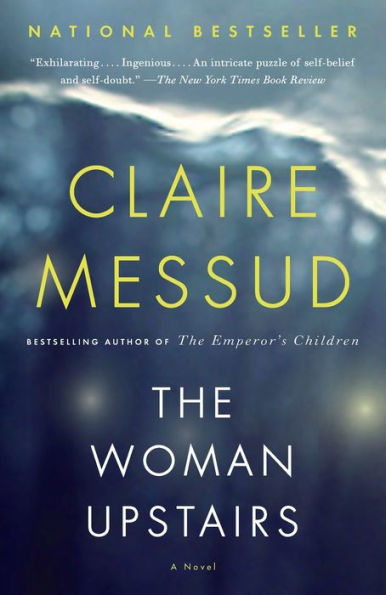Reading Group Guide
The introduction, discussion questions and suggested further reading that follow are designed to enhance your group’s discussion of best-selling author Claire Messud’s brilliant new novel, The Woman Upstairs.
1. Note Claire Messud’s epigraphs for the novel—quotes from some very persuasive, and very powerful, male writers. How do these words set up expectations for the reader? How do these choices look to you upon finishing The Woman Upstairs? And what about the other male writers (such as Dostoyevsky and Chekhov) whose work is alluded to in Messud’s text? Do they reveal anything about the author’s own understanding of Nora’s reliability, sense of self and potential literary legacy?
2. Nora introduces herself by saying: “My name is Nora Marie Eldridge and I’m forty-two years old. . . . Until last summer, I taught third grade at Appleton Elementary School in Cambridge, Massachusetts, and maybe I’ll go back and do it again, I just don’t know. Maybe, instead, I’ll set the world on fire. I just might” (p. 5). Which choice seems more likely for Nora? How might she set the world on fire? Is the book itself an act of revenge?
3. At the beginning of the novel, Nora says: “I’ve finally come to understand that life itself is the Fun House. All you want is that door marked EXIT, the escape to a place where Real Life will be; and you can never find it” [p. 4]. Why does Nora feel that life is a Fun House? What does the Fun House represent for her? Why does she feel it’s impossible to escape? Why is Nora so drawn to each of the Shahids? What do they seem to offer her, and how do her memories inform her attraction to them?
4. What does Nora mean when she describes herself as “the woman upstairs”? What are the chief attributes of this archetype?
5. Nora asks, “How did all that revolutionary talk of the seventies land us in place where being female means playing dumb and looking good?” (p. 4). In what ways can The Woman Upstairs be read as a feminist novel? Which aspects of women’s experience does the novel illuminate?
6. Nora might be described as a self-conscious narrator. At the beginning of Chapter 7, she writes: “There was another strand in this tapestry. What does it signify that I am loath to tell you, slow to tell you?” (p. 148). What effect is created by Nora’s direct addresses to the reader and her self-questioning? How does Nora want her readers to see her? Does this honesty make her more of a reliable narrator, or does it trigger the reader to be more skeptical of her storytelling—including her observations and her claims?
7. As he walks her home one night, Skandar tells Nora, “You don’t look like a ravenous wolf,” to which Nora replies, “Well, I am. . . . I’m starving” (p. 161). What is Nora so hungry for? Where does her hunger—her longing and desire—come from?
8. Earlier in the novel, she writes that hunger is “the source of almost every sorrow” (p. 46). Is hunger at the root of her own pain? Nora understands that “the great dilemma” of her mother’s life “had been to glimpse freedom too late, at too high a price” (p. 40). Does Nora reenact her mother’s failed ambitions or go beyond them? Why did Nora give up the artist’s life and become first a management consultant and then an elementary school teacher?
9. Why does Nora choose Emily Dickinson, Virginia Woolf, Alice Neel and Edie Sedgwick as subjects for her dioramas? In what ways does she identify with, yet try to distinguish herself from, these particular writers and artists?
10. The ending of The Woman Upstairs delivers a tremendous shock to Nora and to the reader. Were there hints and warnings that a betrayal was coming? Why wasn’t Nora more wary of her involvement with the Shahids? What may have motivated Sirena to treat Nora as she does?
11. Early in the novel, Nora writes: “I’m not crazy. Angry, yes; crazy, no” (p. 5). But later she suggests that if someone else told her story to her, she’d conclude they were either crazy or a child. How is the reader to understand her mental and emotional state?
12. After visiting Sirena’s Wonderland exhibit in Paris, Nora writes: “How could I begin to explain what it meant . . . the great rippling outrage of what it meant—about each of us, about myself perhaps most of all, about the lies I’d persistently told myself these many years” (p. 252). What does the betrayal Nora suffers mean for each of them? What lies has she told herself?
13. It becomes clear by the end of the novel that Sirena was using Nora. Is Nora purely a victim of Sirena’s ruthlessness? To what extent does Nora make herself vulnerable to such humiliation? Was she also using Sirena for her own purposes?
14. Look again at the ferocious opening pages of the novel and at Nora’s self-description, written after the events the novel describes have already transpired. How has she been transformed by her experience with the Shahids? Has the experience, as painful as it was, been good for her in any way?








